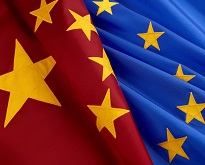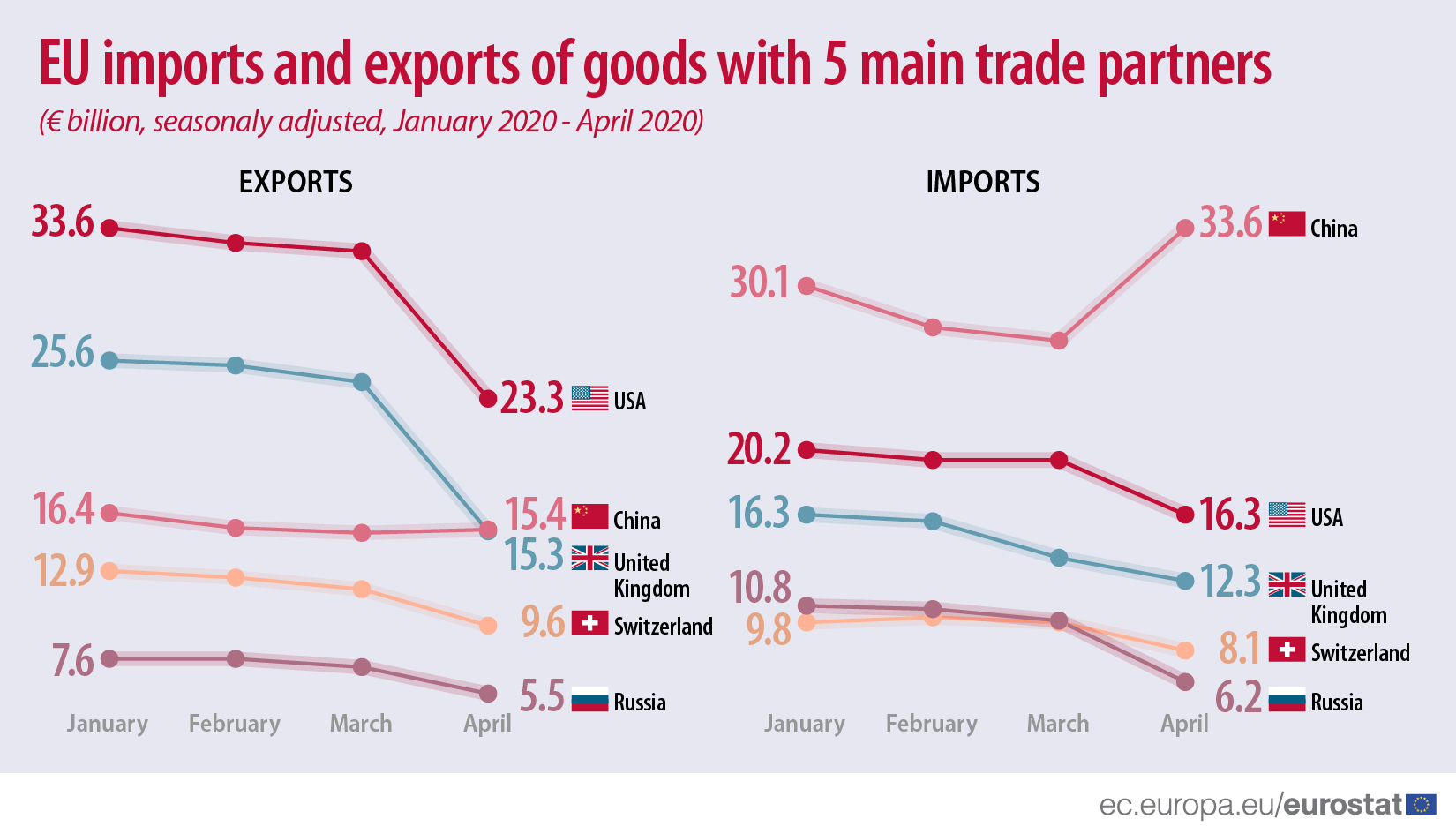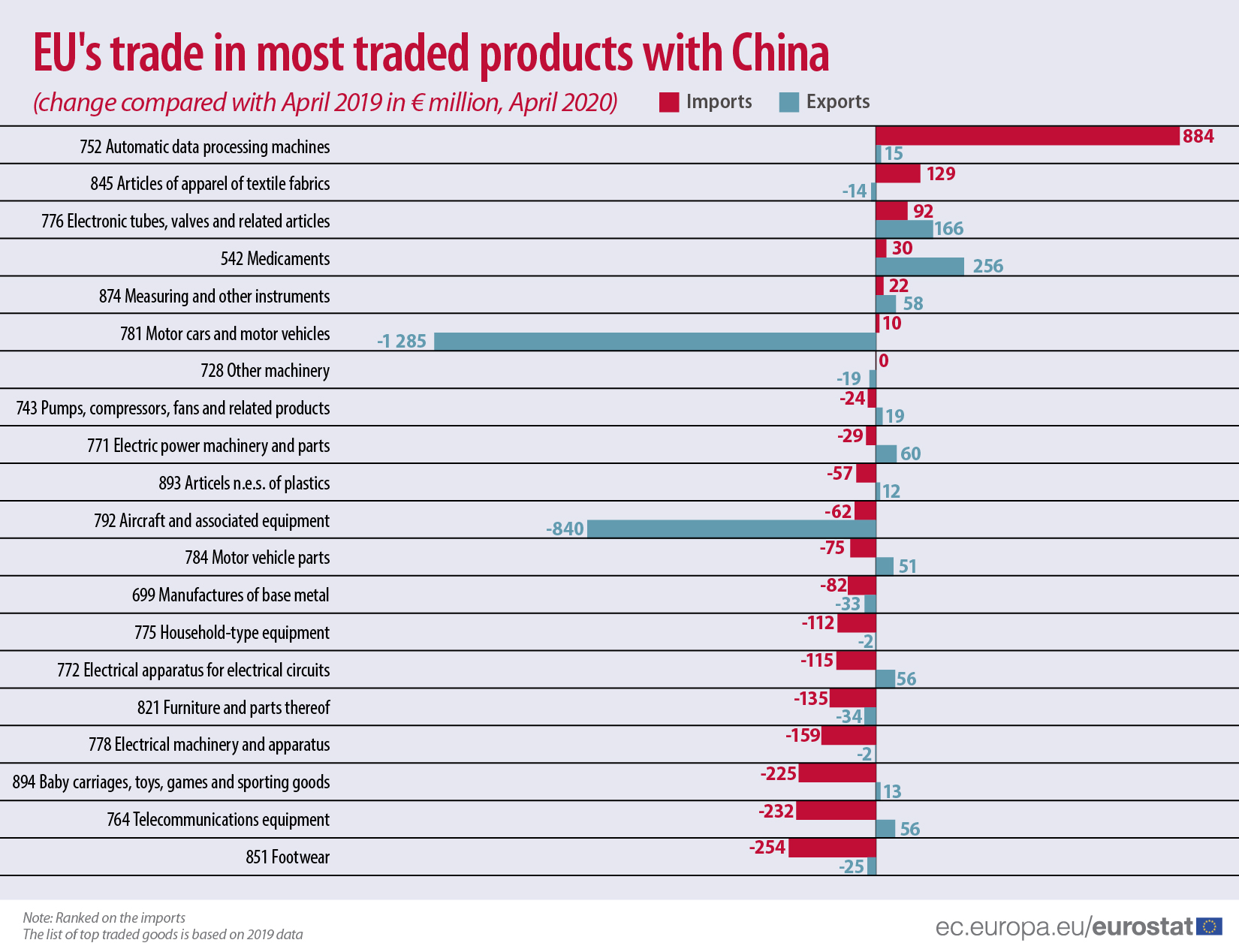Measures taken by EU Member States to prevent the spread of the COVID-19 pandemic, which began in mid-March, were in full force during April 2020. As COVID-19 was first identified in the Chinese city of Wuhan, China already brought in its first restrictive measures in mid-January 2020. Early 2020 data already show significant impacts from these restrictions on international trade in goods.
The EU’s seasonally adjusted trade (imports + exports) with China fell from €46.5 billion in January 2020 to €43.1 billion in February 2020. In March 2020, EU’s trade with China fell further to €41.9 billion, while in April 2020 it bounced back above its January 2020 level to €49.0 billion.
This increase was mainly led by a sharp increase in imports from China (+€3.5 billion and +€6.8 billion compared with January and March 2020 respectively), and was largely due to an increase in imports of specific made-up textile articles such as textile face masks, surgical masks disposable face masks and single use drapes.
Trends in EU’s trade with its 5 main trade partners vary
In April 2020, decreasing levels of trade were observed for imports from all 5 main trade partners of the EU, with the exception of China (+12% compared with January 2020).
The EU’s exports to its 5 main trade partners also fell over this period, with the highest decrease in exports recorded with the United Kingdom (-40%), while the smallest decrease was recorded with China (-6%).
Source dataset: ext_st_eu27_2020sitc
Impact on the most traded goods between the EU and China
Looking at the goods most traded between the EU and China, despite the general downturn, exports of medicaments (+€256 million, +41%), electronic tubes, valves and related articles (+€166 million, +25%) and electric power machinery and parts (+€60 million, +56%) all rose steeply in April 2020 compared with April 2019.
The largest decreases in exports in absolute terms were observed for motor cars and motor vehicles (-€1 285 million, -71%) as well as for aircraft and associated equipment (-€840 million, -89%).
Source dataset: DS-018995
Looking at imports of the most traded goods to the EU from China, the highest increases in April 2020 compared with the same month last year were recorded for automatic data processing machines (+€884 million, +33%), articles of apparel of textile fabrics (+€129 million, +36%) and electronic tubes, valves and related articles (+€92 million, +12%).
The largest decreases in absolute terms were observed for imports of footwear (-€254 million, -52%), telecommunications equipment (-€232 million, -6%) and baby carriages, toys, games and sporting goods (-€225 million, -28%).
The list of these top goods was established based on 2019 data: these goods covered 55% of total trade in goods in 2019. Twelve products belong to machinery and vehicles, seven to other manufactured products and one to chemicals. The most traded product group in 2019 at this level was telecommunications equipment. For more information, you can read the Statistics Explained article on China-EU – international trade in goods statistics.
This news item is published on the occasion of the EU - China summit, which takes place today in Brussels.
Note: The European Union (EU) includes 27 Member States. The United Kingdom left the European Union on 31 January 2020. Further information is published here.
Methodological note: The EU data reflect the political change in the EU composition, so the United Kingdom (UK) is considered as an extra -EU partner country for the EU for the entire period, although the UK was part of the internal market during this period, meaning that data on trade with the UK were based on statistical concepts applicable to trade between the EU Member States. Consequently, while imports from any other extra-EU trade partner are grouped by country of origin, the UK data reflect country of consignment. In practice this means that the goods imported by the EU from the UK were physically transported from the UK, but part of these goods could have been of other origin than the UK. For this reason, data on trade with the UK are not fully comparable with data on trade with other extra-EU trade partners like China.
To contact us, please visit our User Support page.
For press queries, please contact our Media Support.



